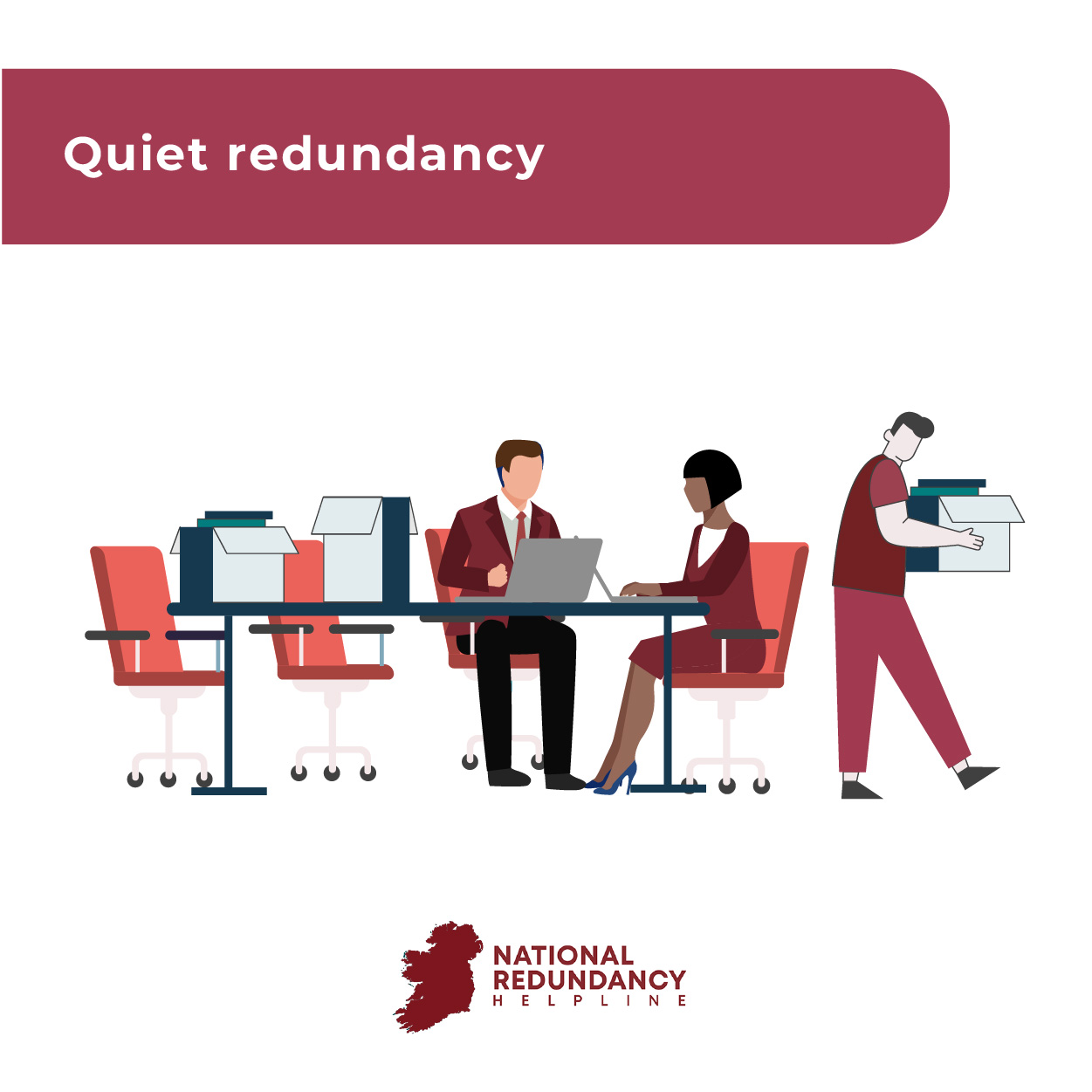You may be. A recent report by Morgan Mc Kinley, describes the emerging trend of ‘quiet redundancies’ to cut back on employee numbers due to economic uncertainty, tariffs, and the advent of AI.
“Quiet redundancies, or stealth job cuts, are referring to discreet changes in workforce structures that aren’t formally announced, which include non-renewal of contracts, rescoping of roles or silent phasing out of certain positions,” said Trayc Keevans, FDI director at Morgan McKinley.

How to spot quiet redundancy
The impact of quiet redundancies may be felt in companies where hiring slows, contracts are not renewed, and posts are ‘absorbed’ into existing teams and operations, for example, where employees leave or go on maternity leave and their posts are not filled but tasks are carried out between existing workers.
Quiet redundancies may also make themselves felt where existing staff members find that they are ‘managed out’ or not given support and resources to carry out their jobs, meaning that they may choose to leave their roles voluntarily, or where employees are offered incentives to retire early.
“We are seeing a workforce that, yes it’s been streamlined, but the workforce that’s in place now, a lot of them are creaking at the seams, in terms of they’re doing a lot more with less resources.”, according to Ms. Keevans.
The report for Q1 2025, the first three months of 2025, suggests that the jobs market shows grounds for cautious optimism.
Professional job opportunities increased by 2% year on year and 7% quarter on quarter. Professional job seekers’ numbers also decreased slightly compared to Q4 of 2024, suggesting a slight stabilisation in the jobs market. Overall, the national unemployment rate dropped to 3.9% by the end of March, compared to 4.5% at the end of 2024.
Challenges facing multiple industries, such as “the combination of global economic uncertainty, AI-led transformation and anticipation around US tariffs suggests companies are shifting from reactive hiring to more cautious, long-term workforce planning.”
What to do if you are facing quiet redundancy
When you feel that your job may be at risk or you are feeling the effects of quiet redundancy in terms of being asked to do more at work with less time or resources, then it may be time to consider how to build resilience and even see quiet redundancy as an opportunity..
Where you may have concerns about leaving your role or being out of work for a while before you find a new role, then it is a good idea to be proactive.
Update your skills
Rather than seeing yourself in a specific role, see yourself as a skill set and upskill or reskill, depending on the requirements of your industry. This will mean that you are more competitive in seeking a new role with your existing employers or in the jobs market.
Take advantage of any supports available to you, such as employment training or seek external professional training or higher education to update your skills.
When you are facing uncertainty and unfamiliarity, it is very challenging and you may be feeling emotional so acknowledge your feelings and look after your mental and physical health as much as possible.
Redundancy
Where you may be faced with formal redundancy, or you wish to leave your job and seek new employment, then it is a good idea to familiarise yourself with the terms of your employment contract and your rights around redundancy.
It may also be time to update your CV and Linked In profile in readiness for entering the jobs market, as well as drawing on any contacts you have in your industry and networking with a view to familiarizing yourself with any opportunities that may be available to you.
National Redundancy Helpline
National Redundancy Helpline has loads of articles, hints and tips for those facing and experiencing redundancy.
If you wish to speak to an approved redundancy advisor, fill in our online assessment or contact us and you will receive a call back to get free and unbiased redundancy advice.


